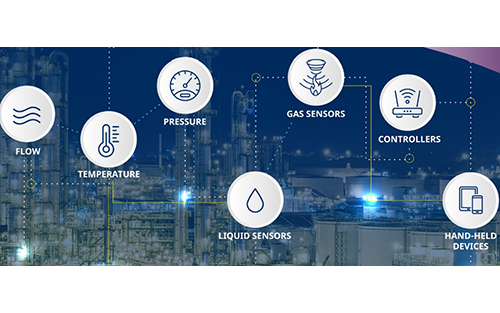Organizations are driving forward to providing industrial manufacturing open standards, roadmaps and models that are accelerating implementation of digital end-to-end manufacturing business platforms by integrating traditionally siloed departments. Open industrial standards allow manufacturing to directly access and leverage disruptive technologies that have led to dramatic growth and profits in other business segments. The 7th Annual Automation.com 2022 Industrial Automation & Control Trends Report describes the value, impact and opportunities of open standards and global initiatives.
Industrial users and computer industry professionals have been collaborating with industrial experts to develop and deploy new open standards and global initiatives that are opening up new possibilities for digital manufacturing. Global standards free users to focus on the most important factors and unleash their creativity to leverage best-in-class hardware and software components to achieve their unique goals. Semantic standards provide intelligent uniform data communication from sensors and control devices, simplifying the integration of the entire manufacturing business. Semantic data is structured to add meaning and context as opposed to cryptic messaging with information modeling that encapsulates the data and the meaning of data.
This is accomplished by creating relationships between the data entities to give truth to the data and the needed importance for data consumption. Semantic data helps with the maintenance of the data and with maintaining consistent relationships between the data. For example, in addition to simply communicating an analog sensor value, the context—such as: “heated water temperature reactor number 5”—is included. Intelligent semantic data for the industrial edge provides a deep understanding of operations with real-time key performance indicators (KPIs) to maximize efficiency and quality.
Open standards bring collaboration
Open standards unleash the shared investment and creative talent from many companies, enabling effective collaborations.The most obvious examples are the open Internet standards, which are the cornerstone of the Internet’s success. They enable its existence, facilitate its growth and provide a platform that supports creativity, which benefits all users. Multi-vendor open standards foster a broad selection of products and vendors for end users to choose from. This competition is what drives innovation.
Application developers can take advantage of the levels of compatibility afforded by the standards, which, in turn, helps developers create new applications that might not have been previously possible. Open standards also level the playing field allowing industrial manufacturing and production organizations to be competitive by automating operations at lower investment. This is particularly important with the realization that low labor cost in no longer an effective competitive strategy. Of course, digitalization and automation lower labor costs, as well as improving quality, customer responsiveness and flexibility..
But sustained competitiveness and growth can only be accomplished by leveraging advanced technologies, using automation as a center to enable a successful transition. As open manufacturing initiatives continue to advance worldwide, a major focal point is the Industry 4.0 movement that continues to accelerate. Industry 4.0 has defined a model for all industrial manufacturing organizations to use to achieve the goal of digital holistic and adaptive automation system architectures.
Germany’s Industry 4.0 initiative ignited worldwide cooperative efforts in other countries including China, Japan, Mexico, India, Italy, Portugal and Indonesia. The 7th Annual Industrial Automation & Control Trends Report provides in depth information and analysis on global open standards and other topics on the manufacturing digital transformation. Learn more by clicking here.


